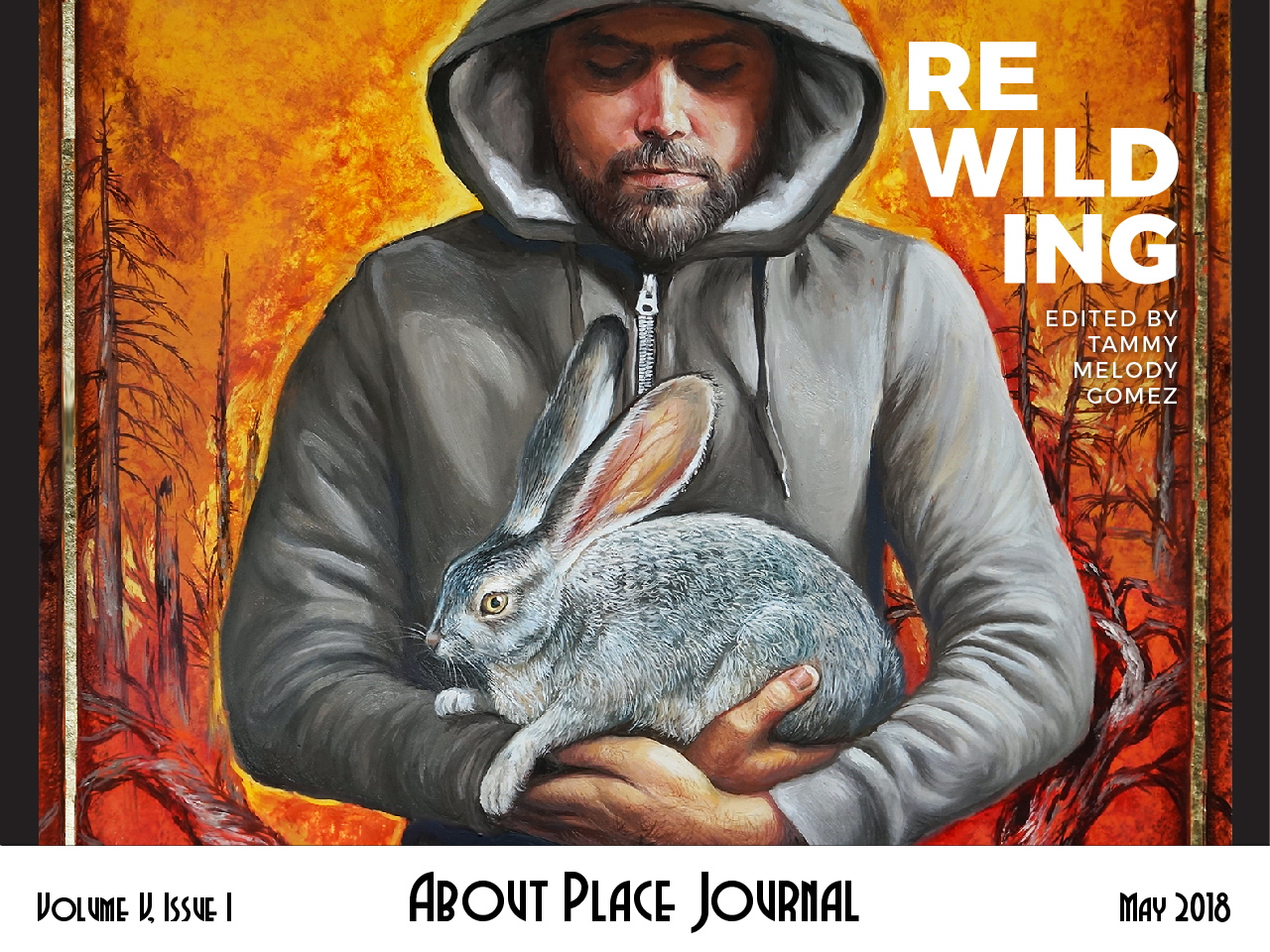One evening last autumn, a red fox flirted with me from my neighbor’s yard. As soon as I got too close—walking towards it, yearning for its message—it pounced twenty feet away. When I retreated towards my front porch, it rallied forward again, as if to say “Don’t give up on me.”
We kept up like this for a full thirty minutes, until I decided to break the connection and leave the fox to curve back towards the Trinity River and surrounding urban forest a few blocks away. So, I guess, I didn’t break my connection—if I was still thinking about it, hoping it would survive the coming winter, and wondering what our front yard encounter said about me. I’ll always savor our silent conversation and try my hardest to not compromise its habitat, anchored so near mine.
It’s evident to me, by absorbing all the varied perspectives on rewilding that are collected here—in video, sound & song, prose, dance/performance, poetry, social sculpture/interactive tribute, and art/photography formats—that many of us long for the connections we have lost and are working to prevent the predicted (but not necessarily inevitable) passing of species, cultures, languages, and lifeways that we now risk in this, the Anthropocene epoch.
The work here helped me realize and accept that I truly need to mourn the creatures, natural features, and opportunities that I didn’t even know we’d lost. Artists here have turned my attention to such things as songbirds of New Zealand; lifeways now going permanently underwater in southern Louisiana; and people of color trying to safely navigate on legendary hiking trails in the U.S. I’ve spent a lot of time crying and feeling the losses as I’ve prepared this issue, which is full of questioning contemplations, yet promises no easy answers or pat solutions.
But as a carefully-curated assemblage of possibility and hope, this issue includes artists who suggest myriad ways we may carve helpful paths of coexistence while also struggling to remember what keeps us human and what we risk losing of ourselves if we just look away and forget. Rewilding as performance artist, queer healer, adolescent student, female dancer, hunter, farmer, full-time caretaker, indigenous scientist, and writer/educator takes clarity of vision, willingness to risk-take, and an abiding commitment to love.
Many thanks to the Black Earth Institute, to all the wonderful artists who stepped forward with incredibly passionate words and work for this issue, and to our editorial team for their dedication to the endless hours it has taken to assemble these works into a package you are about to open and—hopefully—revisit for many months to come. Thank you for joining us in this immersion into rewilding.
I dedicate my work on this issue to the pigeon who dangled by the neck from an electrical power line stretched across the Trinity River—from November until April. As I bicycled past its lifeless body on cold winter days, helpless to cut it down to give it a place on earth to rest, I was reminded to never look away nor ever forget that my continued existence is inextricably connected to that of every living being in or out of my sight.

